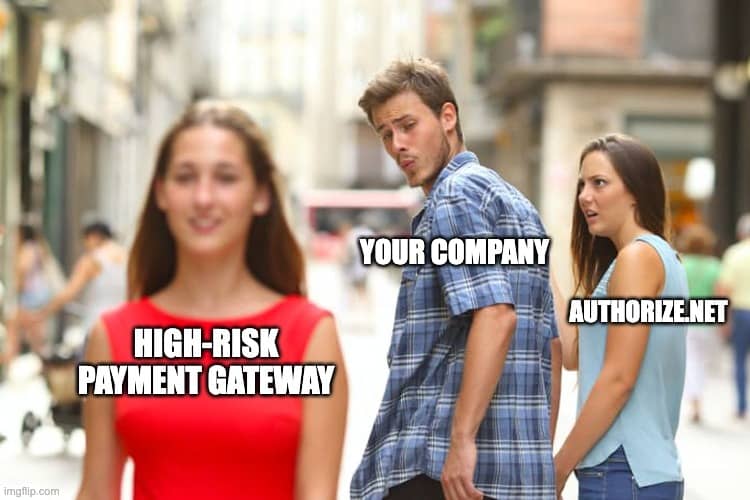Understanding Payment Processing Rate Tiers for Merchant Accounts

No matter what type of business you have, it’s inevitable that you’ll be charged payment processing fees. Without a merchant account, you can’t process credit and debit card payments, causing customers who prefer those payment options to shop elsewhere. Your business needs the services of a transparent, trustworthy merchant account provider.
Merchant account fees are nearly unavoidable. These fees are typically broken down into tiered pricing models known as rate tiers. Based on your assigned tier, you have to pay a fee for every transaction you process. The biggest issue with this is that some merchant account providers’ rate tiers aren’t easy to understand.
But by shedding light on rate tiers and how they’re structured, you can better understand how much you’re paying in processing costs. The best merchant service providers have clear fee structures, work with you, and work for you.
If you’re a business owner trying to get approved for a high-risk merchant account, Zenti can help. Reach out to us so you can start accepting VISA, Mastercard, American Express, Discover, and other card payments. Additionally, you’ll enjoy access to eCheck, eCommerce, Automated Clearing House (ACH), and mobile wallet payment processing.
Even if you’ve been denied a merchant account in the past, Zenti can get you approved for payment processing with affordable fees, so you can boost your bottom line while enjoying the benefits of credit card processing.
Table of contents
- The Payment Chain: Who Gets Payment Processing Fees?
- What Fees Are You Paying?
- How Tiered Pricing Works
- Is Tiered Pricing Right for Your Business?
- Interchange Rates for the Big Four
- Additional Fees to Consider
- Reducing Chargeback Fees
- Partner with Zenti
The Payment Chain: Who Gets Payment Processing Fees?
Before explaining what tiered pricing is, let’s take a look at the payment processing chain. When a customer makes a payment transaction with a credit or debit card, the customer’s card is accepted by the merchant and the payment is passed through a number of steps. It first reaches the acquiring bank (the merchant’s bank), then it’s sent to the payment processing company. In some transactions, it might go to an independent sales organization (ISO) or membership service provider (MSP), both of which act as third-party payment processors.
Once the payment is processed, it reaches the bank that originally issued the credit card. At this point, the payment is then sent to the corresponding credit card company.
Along this payment chain, each organization takes its own cut in the form of markup fees that are tacked onto the transaction. Everyone takes markup fees along the way, including merchant service providers, payment processing companies, card networks, and the banks that finance them
If you’re tired of paying higher credit card processing fees, Zenti can help. As one of the nation’s leading merchant account providers for high-risk businesses, Zenti can get you approved so you can accept all types of credit card payments, plus e-check and mobile app payments, at affordable low rates, or even zero-fee processing.
What Fees Are You Paying?
We’ve talked about where your fees go — but exactly what fees are you paying? And how do these fees factor into tiered pricing?
For every non-cash payment transaction, merchants pay three basic fees:
- Interchange fee: Charged by the issuing bank
- Processing fee: Charged by the credit card network
- Assessment fee: Charged by the payment processor
For merchant accounts, payment processing companies implement their fees through one of these three pricing models: flat-rate, interchange plus, and tiered pricing.
With flat rate pricing, a flat rate percentage — plus a minimal fee — is charged per transaction. This type of structure is beneficial for small businesses that process less than 5,000 USD per month.
Interchange plus also charges a flat-rate processor’s fee and a variable percentage rate. This rate is determined according to the interchange fee, a transaction fee charged by the credit card company. Interchange plus is especially advantageous for businesses that process a high volume of credit card sales because it allows merchants to negotiate for the most cost-effective processing fees.
The third pricing structure, tiered pricing, offers its own advantages or disadvantages, depending upon your sales and credit card transaction volume. Here’s what you need to know about tiered pricing.
How Tiered Pricing Works
Tiered pricing works differently than the other two models because it bundles the interchange fees into a variable rate. One of the advantages of tiered pricing is that this variable rate is the same for all brands of credit cards, but this rate can vary drastically according to the type of card being used.
With tiered pricing, credit and debit cards are categorized as qualified, mid-qualified, and non-qualified. The type of credit card you have will determine which category it’s in, how high your processing fees will be.
Here’s how credit cards are categorized under these rate tiers:
- Qualified: Qualified rates impose the lowest fees for processing. Eligible cards for this category include non-reward credit cards and debit cards.
- Mid-qualified: Mid-qualified rates fall in the middle range of fees. Cards eligible for this category include membership rewards cards and loyalty cards. Additionally, transactions that have to be manually keyed in also fall under this category.
- Non-qualified: Non-qualified transactions charge the highest processing rates. Cards that fall under this category include high-reward cards, high cash-back cards, and international credit cards, In addition, card-not-present transactions, which include any transaction where the card isn’t physically present, also fall under this category.
Tiered pricing rates can range from around 1.4 percent on the low end to more than 4 percent. And as you can probably see, the higher the value of a rewards card, the higher the processing fees. Did you ever wonder how some rewards cards can afford to offer so many cash-back promotions? They finance those perks by charging higher processing fees. That’s why rewards and high-value, cash-back cards are included in the “non-qualified” category — and how credit card companies get their money back.
Is Tiered Pricing Right for Your Business?
Search Google for “tiered pricing” or “rate tiers” and you’ll get a variety of differing opinions about whether it’s right for your business. When compared to one of the most common pricing structures, interchange plus, tiered pricing may offer fewer benefits for small- and mid-size business owners.
One of the biggest disadvantages of tiered pricing is its lack of clarity. Since it’s not simply based on interchange fees, it’s far less transparent to the merchant. This means that you may not realize exactly how much you’re paying in transaction fees.
In some cases, merchants may be attracted to the lowest rates that are advertised because they’ll only see the rates listed for qualified transactions. With the abundance of high-value rewards and cash-back cards on today’s market, however, many transactions may not fall under the qualified category — and for mid-qualified transactions and non-qualified transactions, the fees are significantly higher. As a result, merchants who are expecting lower qualified rates may experience sticker shock when they look at their transaction charges.
Another disadvantage of tiered pricing is that payment processors can charge whatever they like for their services. High-risk merchants are between a rock and a hard place. Rate tiers mean processors can increase their processing costs whenever they like, especially for mid- and non-qualified transactions. Since prices aren’t fixed, merchants don’t have the benefit of an ironclad agreement. Merchants may suddenly find that their fees have escalated.
If you’re not sure which pricing structure is right for you, Zenti can help. We specialize in finding the best, most cost-effective payment processors for high-risk merchant accounts. Our expert advisors can help you get approved for the payment services you need, so you can offer your customers the payment options they want. Plus, you’ll enjoy tools that streamline billing and invoicing, so you’ll always be in financial control.
Interchange Rates for the Big Four
If you’re a business owner, you’re probably already aware that some credit cards are more expensive than others. Depending on the credit card brand, your payment processing costs may be higher. For example, American Express has always charged a higher percentage for processing rates. And while the company lowered its rates in 2018 to be more competitive, its markup is still higher than those of other credit cards. In fact, compared to other card networks, around 1.3 million fewer merchants accept American Express due to these higher fees.
As a comparison, here’s a look at the average interchange rates for the Big Four major credit cards:
- Mastercard: 1.5 percent - 2.6 percent
- VISA: 1.4 percent - 2.5 percent
- American Express: 2.3 percent – 3.5 percent
- Discover: 1.55 percent – 2.5 percent
Even if these percentages seem low, they can quickly add up. Just to put things in perspective: US merchants paid a whopping 55.4 billion USD just for VISA and Mastercard interchange fees in 2021.
Many high-risk payment processors charge different rates for different credit cards, but Zenti charges the same rate for all four major credit cards, no matter what type of business you’re in. This means you can offer your customers a full range of credit card payment options without having to pay high credit card processing fees.
Additional Fees to Consider
In addition to interchange, processing, and assessment fees, merchants may also be required to pay other fees for their merchant account payment processing, including:
- Batch fees: Batch fees may be added on if you process your transactions in bulk at the end of each business day.
- Equipment fees: Depending on your payment processor, you may be charged a rental or deposit fee for your credit card reader or other payment equipment.
- Termination fee: This is charged upon termination of a merchant account.
- Statement fee: This administrative fee may be added to your monthly statement.
There’s one more type of fee that’s the bane of every merchant’s existence — chargebacks.
Reducing Chargeback Fees
Chargebacks occur when a customer contacts the credit card issuer for a refund on goods or services they purchased. Chargebacks may be requested for a number of reasons, most commonly:
- Non-delivery
- Customer dissatisfaction
- Duplicate charges or other transactions errors
- Damaged goods
- Subscription cancellations
- Unauthorized charges
In particular, fraudulent charges make up a large percentage of chargebacks, with 80 percent of chargebacks reported as being fraud-related.
Unfortunately, even though merchants aren’t at fault, they’re ultimately issued chargeback fees for every one of these refunded transactions. And too many chargebacks won’t just hurt your revenues; they’ll also hurt your reputation. Banks and credit card companies don’t like to lose money, and that’s why businesses with a high volume of chargebacks are relegated to the high-risk category.
If your business is designated high-risk, you’ll have more difficulty getting payment processing services — and even if you can get them, you’ll have to pay higher rates. That’s why it helps to have a specialist who can help you mitigate these costly chargebacks.
As a leading high-risk merchant account provider, Zenti can help you navigate your business through the pitfalls of too many chargebacks. With Zenti, you’ll get the tools you need to prevent chargebacks, plus the security protocols you need to protect yourself from fraudulent charges.
Credit card fees may be unavoidable, but merchants still have some options when it comes to lowering their fees and negotiating for better terms. The most important thing is to opt for a fee structure that offers enough transparency so you’ll know exactly how much you’re paying for every transaction.
Partner with Zenti
If your business is high-risk, Zenti can help you get approved for the full range of credit and debit card payments, plus e-check, e-commerce, mobile app, and digital wallet payments, even if you’ve been denied in the past. Plus, Zenti offers tools to help you streamline invoicing and billing, with strategies and protocols to help protect your merchant account.
If you’re ready to take your business to the next level of success, contact Zenti and find out how you can get the merchant account services you need, at affordable rates that will help boost your revenues.
Read Next

Find out whether Authorize.Net works for high risk merchants, what restrictions you might face and how to get approved.

Get expert advice on selling CBD products on Shopify, including compliance tips and setting up secure payment options.

Find out why Square may deactivate merchant accounts and steps to resolve issues and maintain uninterrupted payment services.
Need a High-Risk Merchant Account?
Disruption-free payment processing at the best price for your situation, guaranteed.
Get Free Guidance Now!